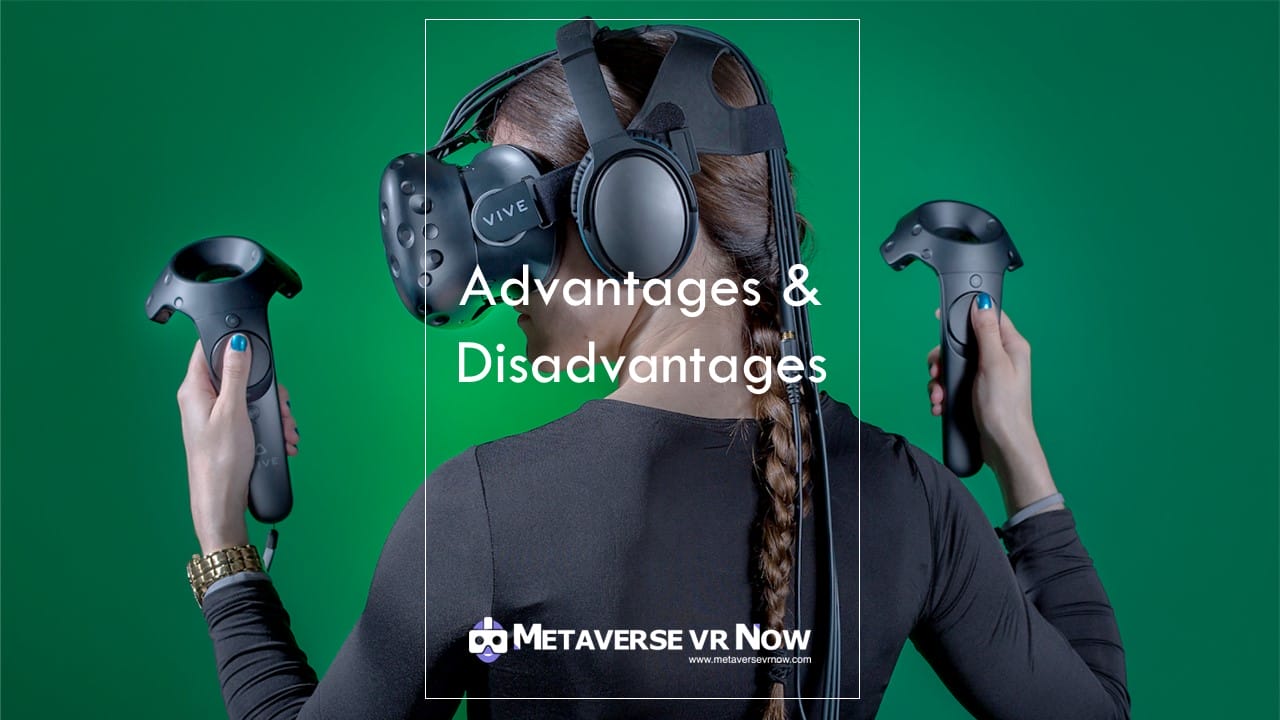Virtual reality technology has been around for a while now, but it has only recently become popular. This technology is used to create a simulated environment that can be used to interact with. There are many different types of virtual reality, including desktop and handheld versions. In this article, we will explore the advantages and disadvantages of virtual reality pertaining to your health, workplace, and home.
What is virtual reality?
Virtual reality (also known as VR) is an immersive experience that can make you feel like you are in another place or time. VR can be used for games, movies, and educational purposes. It can be done on a computer, phone, or headset. There are different types of VR depending on the device you are using. Some common types are desktop VR, mobile VR, and standalone VR.
What are the advantages and disadvantages of virtual reality?
There are many advantages and disadvantages of virtual reality. One advantage is that virtual reality can create a simulated environment. For example, you could use it to create a virtual world where you can explore anything you want without worrying about the real world. This can be very useful for training purposes or for people who want to experience things they wouldn’t normally be able to. Another advantage is that virtual reality can increase productivity. For example, if you are working on a project that requires a lot of focus, you could put on a virtual reality headset and work in a simulated environment that is free from distractions. This can help you get more done in less time.
However, there are also some disadvantages to virtual reality. One disadvantage is that it can be addictive.
The pros and cons of virtual reality can be summarized into one word: Balance. Anything we do in life must be balanced, and avoiding excessive use can be healthy for our bodies and family.
Here are the distinctive advantages and disadvantages of virtual reality:
The Advantages of Virtual Reality
Virtual reality has a number of advantages that make it a desirable medium for entertainment and education.
Here are the numerous advantages of virtual reality.
Medical therapy
Since the first VR clinic opened in 2005 for patients with schizophrenia, social phobia, and alcohol addiction, several institutions in Korea have shifted their focus to VR-based treatments for dementia, PTSD, and computer gaming addictions (IGD). In July 2019, VR-based cognitive-behavioral treatment (CBT) for social phobia was recognized as a new medical technology, which could lead to an increase in the use of VR in psychotherapy. This is according to the National Library of Medicine.
Although further research is needed, preliminary findings suggest that virtual reality can help medical doctors on the following issues:
- Pain management
- PTSD (post-traumatic stress disorder) (posttraumatic stress disorder)
- Specific phobias (phobias)
- Depression
Immersive experience
Virtual Reality technology is gradually becoming more accessible to the average person with the release of devices such as the Oculus Quest 2 and HTC Vive. While there are some clear advantages to using VR, there are also a few disadvantages that should be taken into account before investing in this technology.
The first advantage of VR is its ability to provide an immersive experience. When using a VR headset, users can feel as though they are actually in the environment they are seeing. This can be helpful for training purposes or for experiencing things that would otherwise be too dangerous or uncomfortable.
Increased productivity
Virtual Reality can increase productivity because it can help with training, work tasks, and communication. VR can help people learn new skills by providing a realistic environment to practice in. For example, surgeons can rehearse difficult procedures in a safe virtual environment before attempting them on a patient. Flight simulators can also train pilots. Work tasks that are dangerous or difficult can be completed in VR instead of in the real world. This allows people to take on more challenging tasks without risking their safety. Communication is also an advantage while using a VR headset. People can communicate with each other in virtual environments as if they were in the same room. This eliminates the need for long-distance travel, which saves time and money.
Escapism
Virtual reality allows you to completely immerse yourself in a different world, shutting out the real one around you. This is perfect for people who want to escape from their everyday lives. They can go on amazing adventures or explore new worlds without ever having to leave their homes.
Communication and collaboration
Communication – Virtual reality can increase communication between team members. VR allows team members to communicate with each other in a more realistic way. This can help them understand each other better and resolve conflicts more effectively.
Collaboration – With VR, team members can work together on projects in a virtual environment. This can save time and money and lead to better results.
Greater flexibility – VR gives employees the ability to work from anywhere, at any time. This makes it possible for businesses to operate 24/7, regardless of location or time zone differences.
Another advantage of VR is that it can improve communication and collaboration among team members. By providing a shared virtual environment, team members can communicate and work together more effectively than they would if they were working in separate locations.
Education and training
With technology always advancing, it is no wonder that virtual reality (VR) is becoming more popular in the world of education and training. There are many advantages to using VR in these settings.
First, VR allows people to experience things they would not be able to experience in real life. This can include traveling to different parts of the world, learning about different cultures, or trying out new jobs. In addition, students can use virtual reality to study science and math concepts. This can be an excellent way for students to learn, and it can also be fun for them.
Second, VR can help people learn faster and better. Many studies have shown that people learn more when they are able to see and experience something instead of just reading about it. This is because our brains are able to process information more quickly when we see it and hear it as opposed to just reading it.
Third, VR can be used to train people for dangerous situations. For example, firefighters can use VR to practice fighting fires, or military soldiers can use VR to practice combat scenarios.
Gaming and entertainment
Virtual Reality technology has been around for a few decades. Still, it’s only recently that it’s become more mainstream with the development of affordable headsets like the Oculus Quest 2 and the HTC Vive. VR offers several advantages over traditional gaming and entertainment experiences.
First, VR allows players to immerse themselves in a game or other experience completely. This is thanks to headsets that block out distractions and create an immersive environment. This can be especially beneficial for games that require complex controls, as players can avoid any potential distractions and focus entirely on the game.
Second, VR can provide a more social experience than traditional gaming. While playing a game on a traditional screen, players are typically isolated from each other. With VR, players can be in the same virtual space together and interact with each other.
Social networking
There are many advantages of virtual reality. One key advantage is social networking. For example, people can use virtual reality to communicate with others in different parts of the world. Virtual reality headsets allow it to happen where people can see and interact with each other in a virtual environment. This can be an excellent way for people to make friends from all over the world, and it can also be a fun way to socialize.
The Disadvantages of Virtual Reality
Virtual reality technology is growing more popular each day, but there are several disadvantages to consider before making the switch. VR can be isolating and uncomfortable and produce adverse physical and psychological effects. It also has a low barrier of entry. While these issues may not dissuade everyone from using VR, they should significantly consider it before making the investment.
Here are the risks and cons of virtual reality.
Health risks
Virtual Reality headsets are becoming more popular, but this technology has some disadvantages. One of the main disadvantages is the health risks associated with using VR headsets. These headsets can cause eye problems, such as eyestrain, headaches, and nausea. They can also cause motion sickness because they can make users feel like they are moving when they are not.
Eye strain using virtual reality
One of the most significant health risks is eye strain and eye fatigue. When you use a VR headset, your eyes have to focus on objects that are close to you and far away. This can cause a lot of eye strain, which can lead to vision problems over time.
Headache using virtual reality
Using a VR headset excessively can cause headaches. This is because when you are in a virtual environment, your eyes are working much harder than they would normally.
Nausea
Another health risk is nausea. When you’re in a virtual world, your brain can’t always tell the difference between what’s real and what’s not. This can sometimes cause nausea or motion sickness.
Seizures
Even if they have never had a seizure or blackout before or have no history of seizures or epilepsy, some people (about 1 in 4000) may experience severe dizziness, seizures, eye or muscle twitching, or blackouts triggered by light flashes or patterns while watching TV, playing video games, or experiencing virtual reality. This is according to ClassVR. Children and young people under the age of 20 are more likely to have seizures like this. Anyone experiencing any of these symptoms should stop using the headset and seek medical attention. Before using the headset, anyone who has previously experienced a seizure, loss of awareness, or other symptoms associated with an epileptic disease should consult a doctor.
Addictive potential
Virtual Reality technology is growing in popularity, but this technology has some disadvantages. One of the main disadvantages is health risks, such as addiction. For example, people can become addicted to the virtual world and lose touch with reality. This can be dangerous because they may not be able to take care of themselves or make good decisions.
Body injuries while playing
Finally, virtual reality can be dangerous. There have been cases where people have suffered injuries while using virtual reality headsets. For example, if a person falls while wearing a VR headset, they could sustain a head injury.
Social isolation
Virtual Reality technology is growing in popularity, but there are some disadvantages to this new form of entertainment. One such disadvantage is social isolation. When people use VR headsets, they can become so wrapped up in the virtual world that they lose touch with reality. This can lead to social isolation, as people may begin to spend more time alone in their virtual worlds than with other people in the real world. Another disadvantage of virtual reality is that it can be addictive. People may find themselves wanting to spend more and more time in virtual worlds, and they may begin to neglect important aspects of their lives, such as work or school. This can lead to problems such as depression and anxiety.
Expensive equipment
Virtual reality headsets can be expensive, with the HTC Vive Pro 2 and Oculus Quest 2 costing $749 and $299, respectively. This high price tag may keep some people from experiencing VR. Additionally, many computers are not powerful enough to handle VR gaming, meaning that people will need to upgrade their hardware in order to use VR. Plus, it would help if you bought apps, games, and other software to continue to enjoy the headset.

Conclusion: Advantages and Disadvantages of Virtual Reality
In conclusion, virtual reality has both advantages and disadvantages. Some of the advantages include that it is a great way to experience new things, it can be beneficial for the education sector, and it can help people with mental health issues. Some of the disadvantages include that it can be addictive, it can isolate you or your children, and it can be dangerous for your health. It is essential to weigh the pros and cons of virtual reality before deciding whether or not to use it.
The advantages and disadvantages of virtual reality really depend on the user. Just like in life, moderation is the key to enjoying VR.








